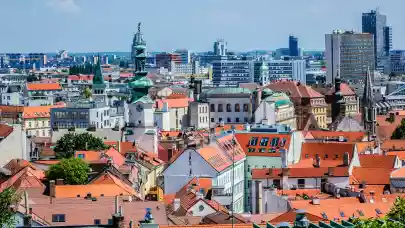
The high street concept is enjoying great success in cities such as Vienna, Prague and Budapest, but this format has long been a failure in Bratislava. The city is experiencing a massive expansion of retail parks, shopping centres and discount chains, according to Colliers' latest report.
Luxury and high-end brands are sensitive to the choice of location, which is determined by factors such as market size, purchasing power, tourism intensity and accessibility within the region. Compared to neighbouring metropolises (Prague, Vienna, Budapest), Bratislava lags significantly behind in the most important parameters.
First of all, it is tourists who influence the emergence and creditworthiness of high streets, and Bratislava, with a purchasing power lower than the European average, is currently not attractive enough. Vienna is only an hour's drive away and has a complete portfolio of luxury brands with flagship stores. In addition, near Bratislava is the Parndorf outlet centre, which offers luxury brands at discounted prices.
Moreover, brands avoid cannibalisation, which is manifested by the reduction of the performance of the first store when opening a second store within a radius of about 300 km. All this, together with economic indicators, reduces the attractiveness of Bratislava from the point of view of high street brands.
While in Prague or Vienna, shopping areas literally live on tourism, in Bratislava, shops are mainly attracted by residents. The total number of tourists at 1.4 million per year is an unbeatable argument compared to more than 8 million in Prague and Vienna.
In large European cities, shopping streets are the natural centre of lively life, while the Slovak customer is used to shopping concentrated in shopping centres and retail parks. This is demonstrated by the shopping behaviour of the Slovak consumer, where convenience, concentration of brands under one roof and easy accessibility win over the atmosphere of a shopping street.
Looking at the potential of individual streets, from an architectural point of view, Michalská and Laurinská streets would have the greatest potential for a luxury shopping street, with their historical value, atmosphere and location.
The current economic situation also has an impact on consumer behaviour. In Slovakia, we are observing a sharp increase in discount chains (Action, Pepco, Kik, Woolworth, Sinsay and Biedronka), which indicates a high price sensitivity of the population. Affordability - in a period of rising prices, most customers are looking for bargains.
Bratislava has the potential to create its high street, but it remains untapped. Unless the approach to public space changes, cooperation between building owners and a strategic vision for the development of retail in the city centre is created, the high street in Slovakia will continue to be just an ambition.




